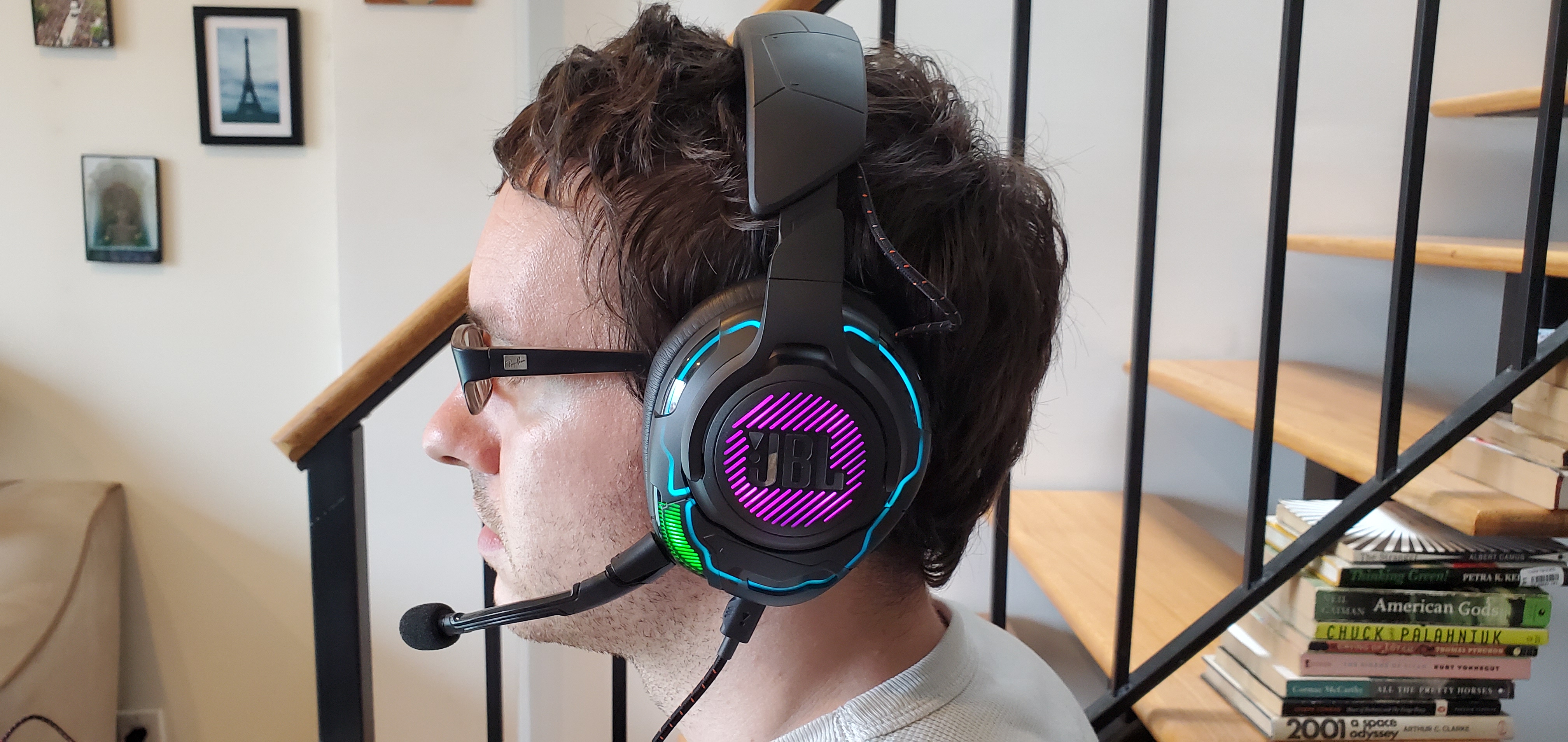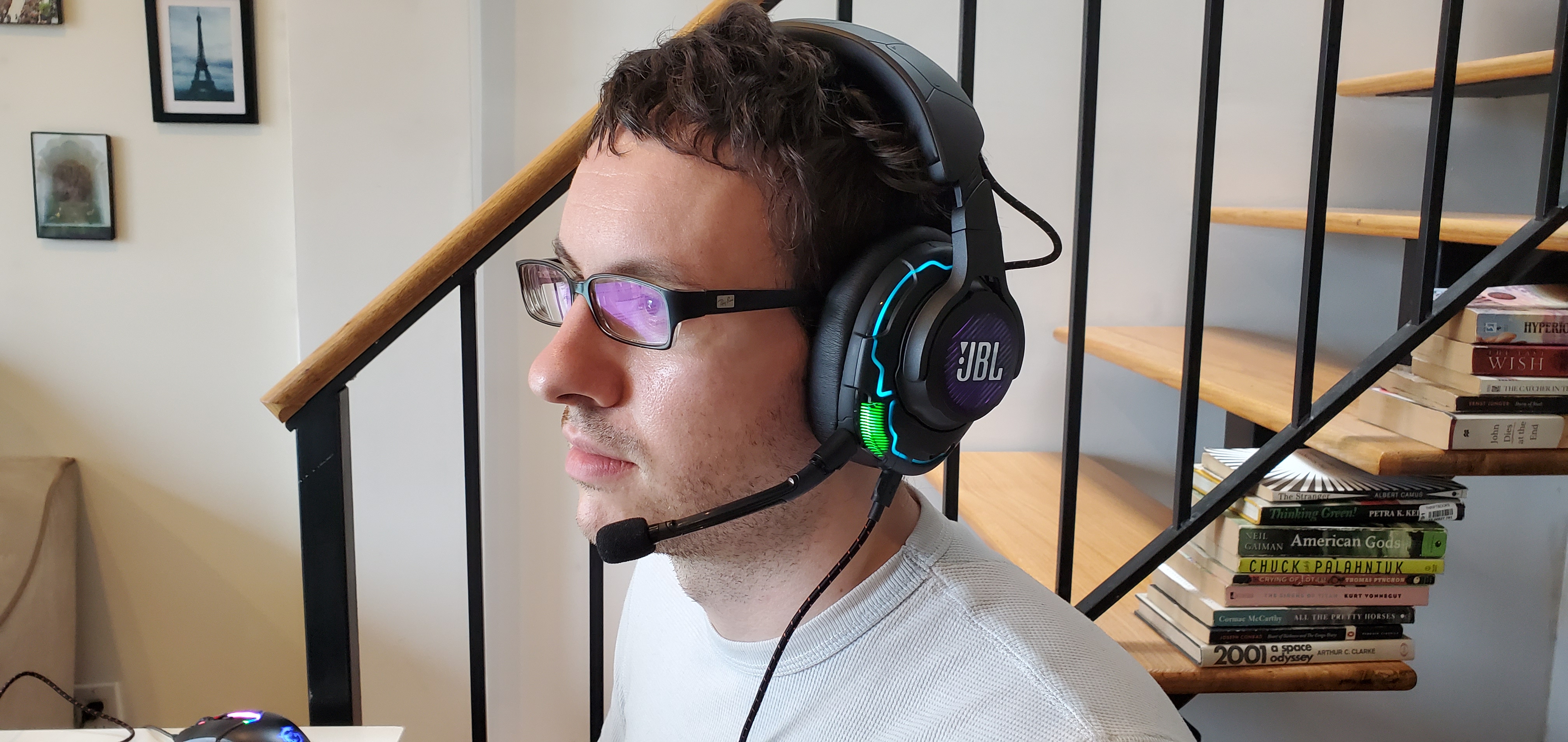Tom's Hardware Verdict
JBL’s first flagship gaming headset is comfy and feature-rich, but its head tracking doesn’t earn the $300 price tag.
Pros
- +
Clear, crisp gaming audio
- +
Many features
- +
Luxurious leather ear cushions
- +
Sturdy, braided USB-A and 3.5mm cables
- +
USB-A, 3.5mm or USB-C connection means flexibility
- +
Game-chat dial
- +
Good software
Cons
- -
Expensive
- -
Teenage design choices
- -
Head tracking has minimal impact
Why you can trust Tom's Hardware
JBL excited audiophiles in January when it announced it was entering the fight for the best gaming headset crown with seven wired and wireless options. The flagship JBL Quantum One (optimized for PC, but also supports Xbox One, PS4, Nintendo Switch and smartphones) follows the ‘in for a pound’ mantra by offering spatial or 3D audio, three connectivity options and RGB lighting controllable by software that’s ready to compete with those of the most established gaming peripheral brands.
But despite a whopping $300 price when it hits retailers on April 13, the Quantum One doesn’t quite make a quantum leap in gaming performance that JBL’s QuantumSphere 360 3D audio head tracking tech promises. Still, a bevy of features means the Quantum One still has a lot to offer.
JBL Quantum One Specs
| Driver Type | 50mm dynamic |
| Impedance | 32 Ohms |
| Frequency Response | 20 Hz - 40 KHz |
| Microphone Type | Unidirectional, detachable boom microphone; Calibration microphone |
| Connectivity | 3.5mm, USB Type-A, USB Type-C |
| Cords | 3.5mm braided cable, USB-A to USB-C braided cable |
| Weight | 13.01 ounces (369g) |
| Lighting | 3 RGB zones |
| Software | JBL QuantumEngine |
Design and Comfort
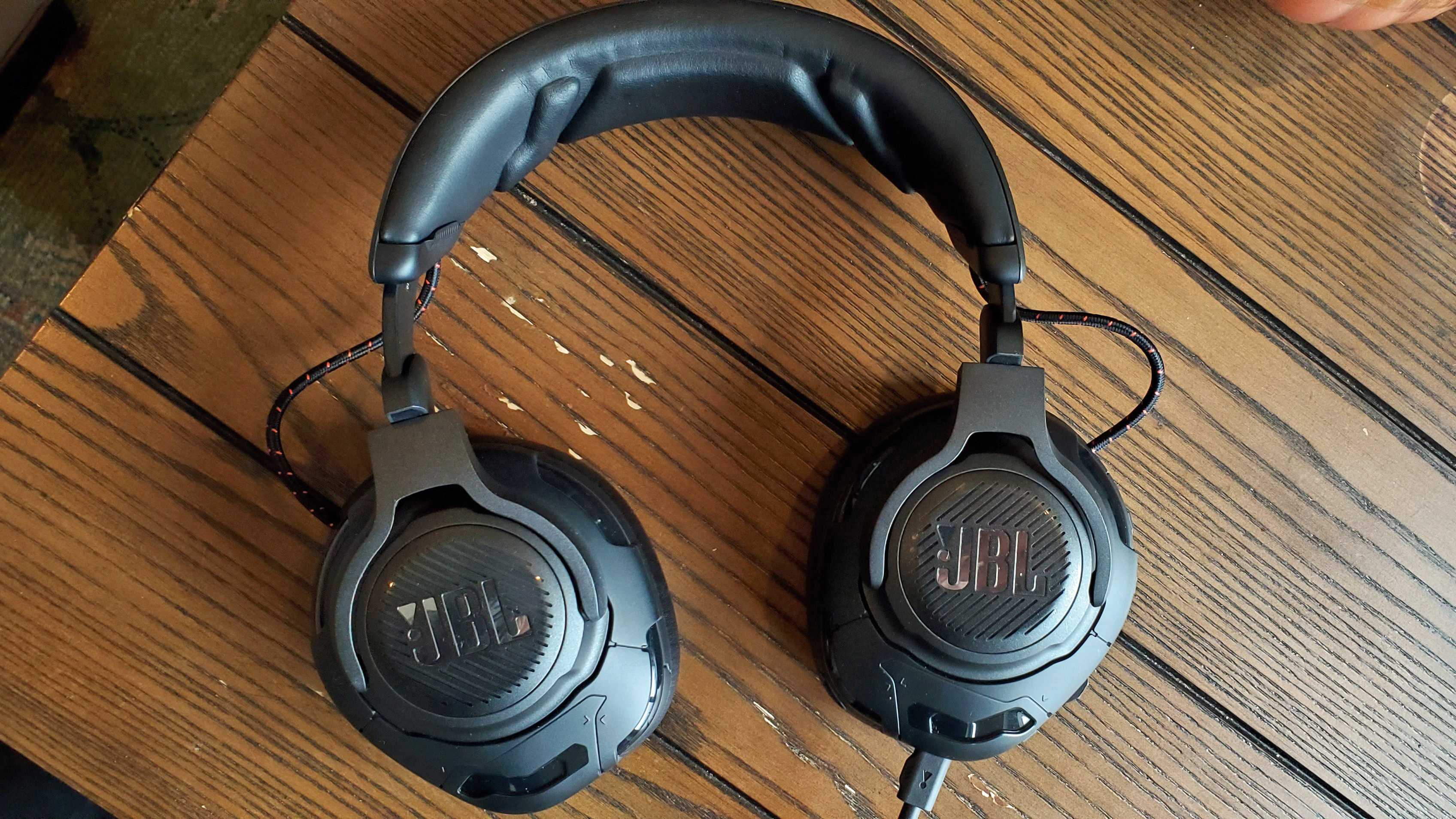
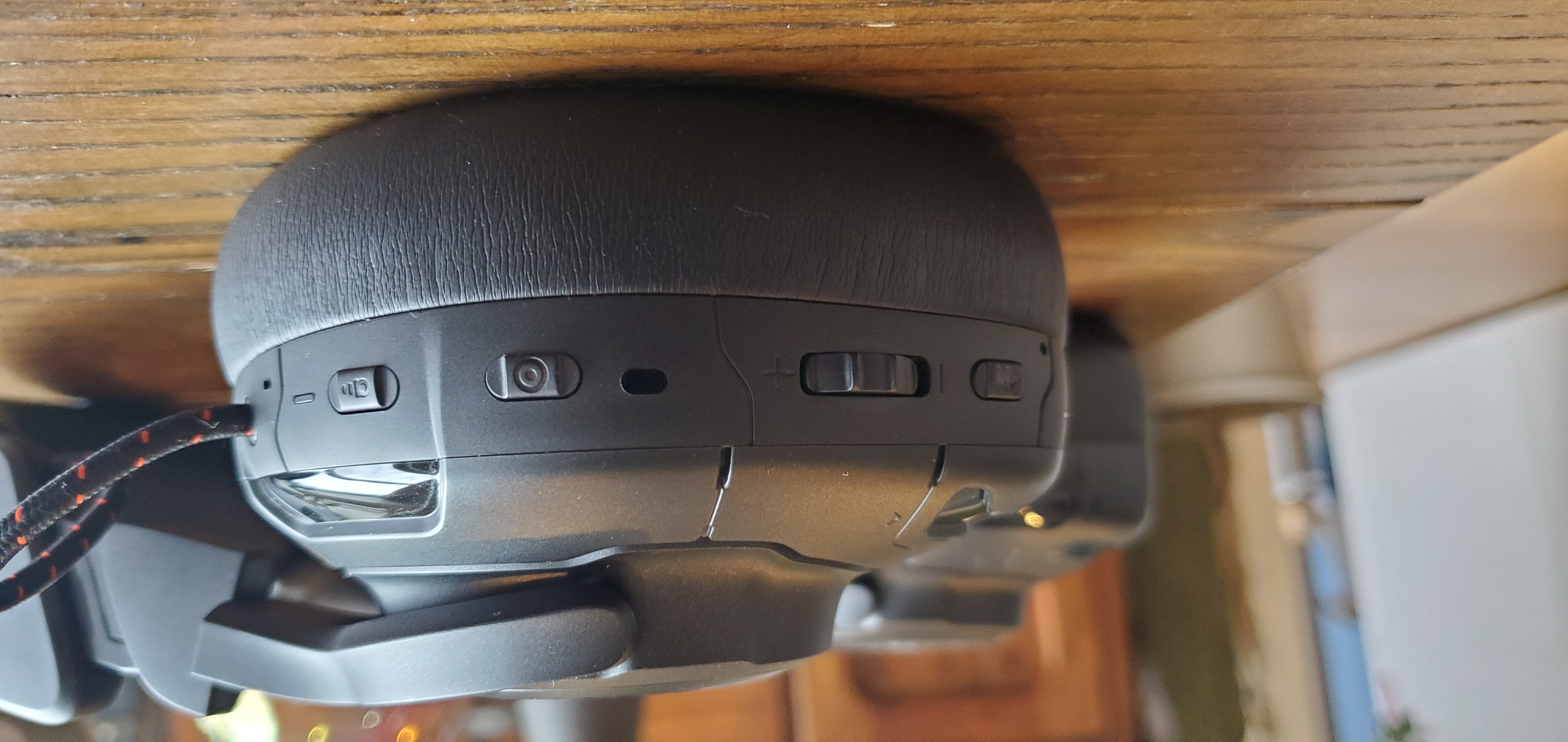
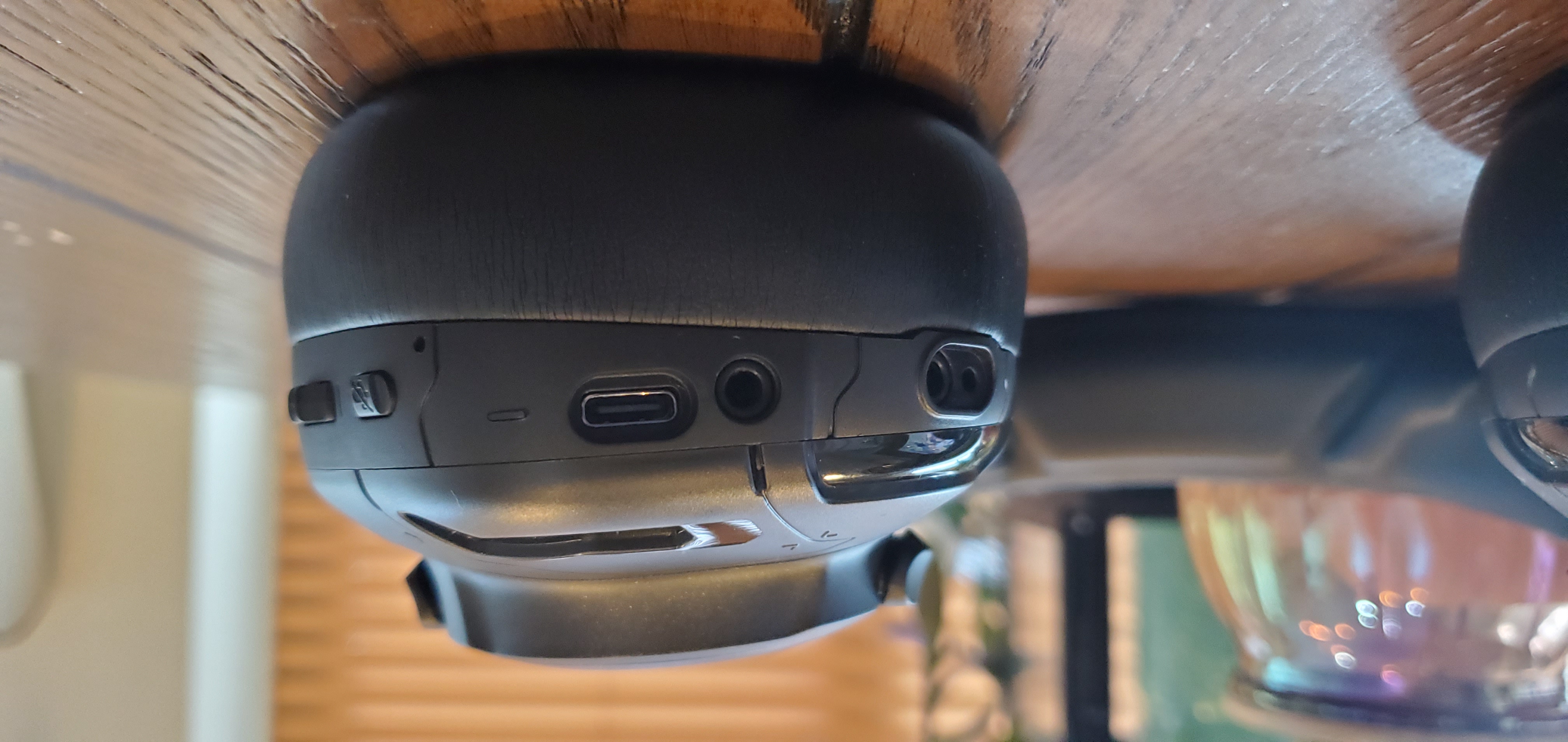
JBL didn’t dip its toe into the gaming aesthetic pool for its first flagship for players; it dove in headfirst. Despite JBL’s non-gaming, over-ear headset lineup having pretty subdued style, barring some bright colors, the Quantum One looks extreme form the jump, with its eye-catching lines, orange-speckled exposed wires, giant logos and bulky design.
With the amount of tech it’s packing, it’s not surprising that the Quantum One is on the heftier side. Compared to something like the 10.9 ounce (310g) Patriot Viper V380, (which also has RGB lighting, plus virtual surround sound), the 13.01 ounce (369g) Quantum One is a burden. But the HyperX Cloud Orbit S, which also has head tracking, is only negligibly lighter at 12.98 ounces (368g). But while the Cloud Orbit S felt slightly heavy for my skull, the Quantum One was easier on my large head. That said, during long gaming sessions, the Quantum One started feeling tight and like it was gently squeezing on the side of my head with leather-clad pillows, thanks to the memory foam ear cushions. Wearing glasses made things worse. On the plus side, the ear cushions’ leather covering is soft luxury, even if the cushions are a bit dense.
Before you even activate the three RGB zones, the Quantum One stands out. The already-bold JBL logo looks extra loud on the Quantum One, thanks to its large size, mirror lettering and the diagonal lines surrounding it. With RGB filling in the spaces between these diagonal lines, the maker if cans will be a secret to no one.
Details in the forms of lines compartmentalizing sections and slightly reflective cutouts give the earcups a spaceship vibe. The earcups can tilt back and forth from their earforks and swivel 180 degrees inward. Meanwhile, the headband extends with strong clicks. And although the extender and earforks feel plastic, they seem pretty thick and strong. Extending the headband reveals additional reflective details to keep the Quantum One’s sci-fi look going.
The soft material on the inside of the headband feels slightly less luxurious than what the earcups have, and the cushioning there is broken up into three areas. It still felt as comfortable as a full strip of padding, and the division here adds to the Quantum One’s disregard for subtleties. The top of the headband boasts another, but more subtle, JBL logo framed in more lines.
Get Tom's Hardware's best news and in-depth reviews, straight to your inbox.
I never like seeing exposed wires on headsets. It can look cool, but the extra stress over potential damage isn’t worth it. Thankfully, the cables starkly hanging from the headband to each earcup are rugged and braided. They also introduce a touch of orange that JBL carries throughout the rest of its cabling and inside the earcups.
Speaking of earcups, they offer a plethora of controls on the left ride, with an easily accessible volume wheel, mic button, active noise cancellation (ANC)/TalkThru button (it toggles both) and head tracker re-centering button (more on those in the features section). There’s also an LED light to let you know ANC or TalkThru is on.
The RGB lighting is easy to forget about, since you won’t typically see it. But if you’re someone who likes to be seen while gaming, the Quantum One has great LED options. JBL’s companion software is pre-loaded with six lighting effects for three separate lighting zones. The first zone is the background of the logo, the second is the rings around the earcups and the third is the notch on the outer edge of each earcup. You can control each zone, including different effects -- like solid, breathing, solid, wave, glitch and spinning -- across different colors (color picker included) and how long each effect or color lasts. Ultimately, you can create some dizzying effects. You can also turn RGB off quickly by holding down the left earcup’s mute button but won’t know it's off until you look at the earcups yourself.
Overall, the Quantum One is a bit disappointing in the looks category. Bigger heads might feel a bit of a squeeze with the cans. The design, from the centerpiece logos amplified with diagonal lines and RGB, plus black and orange cables feels cheesy. Despite its adult price and features, the Quantum One's design looks like it's aimed at teenagers. But it is one of the rare all-black pieces of tech to avoid gathering fingerprints.
A design choice I do agree with is one that’s only for you; the inner ear cups have large orange “L” and “R” markers crafted from diagonal orange lines, under which you can see a peek of the cups’ drivers.
The Quantum One also delivers ample connectivity options. There’s a removable 3.5mm cable for Xbox One, PS4, Switch, smartphones or even your best VR headset. However, to enjoy 3D audio, the game audio-chat balance dial, software, ANC or TalkThru, you must use the USC-C to USB-A cable. The Quantum One will also work with USB-C to USB-C with supporting devices, according to JBL, but doesn’t include the proper cable. The cables that are here are all thickly braided with sturdy connectors featuring JBL branding. While the USB cables hold the game-chat balance dial, the 3.5mm cable also adds inline controls for volume and mic mute.
Audio Performance
The Quantum One’s uses hi-res certified 50mm dynamic drivers, but its crown jewel is its spatial audio with head tracking, which JBL calls QuantumSphere 360. None of JBL’s other gaming headsets have QuantumSphere 360 head tracking, which JBL says “uses proprietary algorithms and integrated head tracking sensors, so competitive gamers can hear enemies and movements around them like never before.” It’s basically head tracking to enhance JBL’s QuantumSurround virtual surround sound technology (made with Harman) and is said to work with content mixed in 5.1 or 7.1 surround.
Battlefield V sounded crisp and clear with the Quantum One using a USB connection without spatial audio. The differences in the sounds of my footsteps crossing different types of terrain were noticeable. I could distinctly hear voices in the distance but couldn’t pinpoint the location of voices or sources of incoming bullets. I did notice crescendoing background music, and at max volume, gunshots rang sharply before fading away into the mountains, but weren’t deafening.
When I added QuantumSurround spatial sound, the location of bullets became a little easier to discern, and the de-crescendoing of a gunshot’s boom lasted longer. With head tracking added to the mix, everything was instantly a touch louder, and my ability to pinpoint the location of enemies increased an increment, plus I was able to follow the sound of a gunshot for a couple seconds longer. I didn’t immediately notice a difference in the location or quality of enemy voices, however, and the audio didn’t seem to move with my head. When I gamed with the Cloud Orbit S’ head tracking feature, the boost in immersion was much more striking. With some games, like Fallout 4, I could feel the sounds move with me as I moved my head, thanks to head tracking, but that wasn’t the case with every game on the Orbit S. For Battlefield V, at least, the head tracking provided a small bump in performance -- but no leap.
In Hitman, which has great surround sound on its own, the Quantum One failed to make a quantum improvement in the audio experience. While dialogue was clear and distinct, even with music playing in the background, I didn’t get a boost in quality when activating spatial sound or even head tracking. In fact, when I switched back and forth between the Quantum One and a HyperX Cloud Alpha S via 3.5mm I had on hand, the audio was more immersive with the latter. With the Cloud Alpha S, I felt like the voices of a concerned crowd were all around me, and after I punched a few members of said crowd, it was clear that the military was shooting at me from the left. With the Quantum One’s spatial audio--with or without head tracking--these sounds were all crystal-clear but didn’t feel like it was all around me. When I dropped the Quantum One’s USB cable for its 3.5mm option, the headset fared much better, thriving off Hitman’s naturally surrounding soundscape.
With movies, including Captain Marvel and Avengers: Endgame, toggling spatial audio and head tracking on and off didn’t yield any immediately noticeable changes. Although games sound clear with audible minute details and sufficient volume, it's still disappointing that the Quantum One’s head tracking doesn’t make a more powerful impact.
In lieu of JBL’s 3D audio, you can use DTS Headphone v2.0, a 3D audio technology using near field and far field technology. I used the feature a little bit with Battlefield V, and, again, bullet shots echoed for a longer amount of time against the snowy mountains, and it was slightly easier to discern the location of incoming noises, especially those of enemy soldiers conspiring against me.
With music, the Quantum One shined, highlighting details that I hadn’t before noticed in old favorites. For example, in The Killers’ “We Were Young,” I heard for the first time a tapping noise going with the beat in the intro that I didn’t pick up previously, and at max volume, the headset had more than enough noise. And ABBA’s “Dancing Queen” came in sharply without the muffled effect that I sometimes get when listening to the song on other devices. At 6% volume, ANC (USB connection only) was mildly helpful in helping to block out noise from a TV in the same room, but the headset gets loud enough that interrupting noise shouldn’t be an issue. The TalkThru feature proved more helpful, and I already see myself using it in the office or at home. By pressing a button on the left earcup, TalkThru quickly lowers music to where it’s just a whisper at 100% volume, so I can have conversations without having to turn my music all the way down just to turn it off. Sadly, the feature doesn’t work with 3.5mm connections, so it can’t help during your morning commute, unless your phone has a USB-C port (and you buy a USB-C to USB-C cable).
Microphone
The Quantum One comes with a detachable boom microphone at 100 Hz - 10K Hz. That mic features noise suppression. It’s short, yet thick, with a rubber-like material and flexibility. I appreciate it’s short, out-your-face, length. When I had someone don the Quantum One and chat with me, his voice was crystal-clear with no echoing or popping with ‘b’ or ‘p’ sounds. Even with this TV up to its max volume, all I could hear was his voice
In addition to its boom microphone, JBL includes a calibration microphone, which lets you attune virtual surround sound to your ear structure by using the companion app. But in my short time with the Quantum One I haven’t been able to test the calibration mic out yet.
Features and Software
The JBL Quantum Engine software takes up 177MB of storage space and is the only place you turn on spatial audio and head tracking. There’s also an equalizer, microphone settings, RGB lighting, the ability to store different profiles and more. The app is advanced enough without crossing the line into off-putting. I was able to re-center, however.
Advanced calibration of JBL’s surround sound technology includes adding your height and head diameter. However, the calibration process wasn’t ready yet, presumably because the headset hasn’t started shipping. I was able to use the re-centering feature of the headset, which is also available via the left earcup. It has you look at a bull's-eye in the center of the screen before clicking your left mouse button.
With software or the USB cable’s included dial, you can easily balance the volume of game audio compared to chat audio. But it’s the dial you’ll want to use. It’s easy to access and feels premium to the touch. It’s even slightly weighted and has a rubber base that prevented slipping during my testing, even with intense gaming sessions. Game-chat balance is Discord-certified and also works with other services, like Skype and TeamSpeak.
In addition to a slightly helpful ANC, lovable TalkThru a calibration mic in addition to the detachable boom mic and multiple connectivity options, the Quantum One isn’t selling you short on features.
Bottom Line
The JBL Quantum One is a bold step into gaming headsets for the reputable brand. It makes some questionable design choices and can feel tight on large heads. But the ear cushions have a desirable leather material, and the RGB implementation is daring and unique.
At $300, we hoped that virtual surround sound or head tracking would make a more noticeable difference in PC gaming. I perceived a small boost in performance, but for $30 more the HyperX Cloud Orbit S’ head tracking was much more impressive. Of course, the necessity of head tracking for gaming is debatable. If you ignore that, the Quantum One’s audio is crisp and clear and brings out the finer details in games, like the varying crunching noises footsteps can make depending on how melted the snow on the ground is, and music. Plus, you can’t get its full array of features, like TalkThru, game-chat dial/control or RGB, on the Orbit S.
If you buy the Quantum One, do it for the sturdy build, superior general audio performance and maybe even the RGB and welcoming software. But if you need game-changing head tracking to justify the $300 price tag, JBL isn’t quite there yet.

Scharon Harding has over a decade of experience reporting on technology with a special affinity for gaming peripherals (especially monitors), laptops, and virtual reality. Previously, she covered business technology, including hardware, software, cyber security, cloud, and other IT happenings, at Channelnomics, with bylines at CRN UK.
